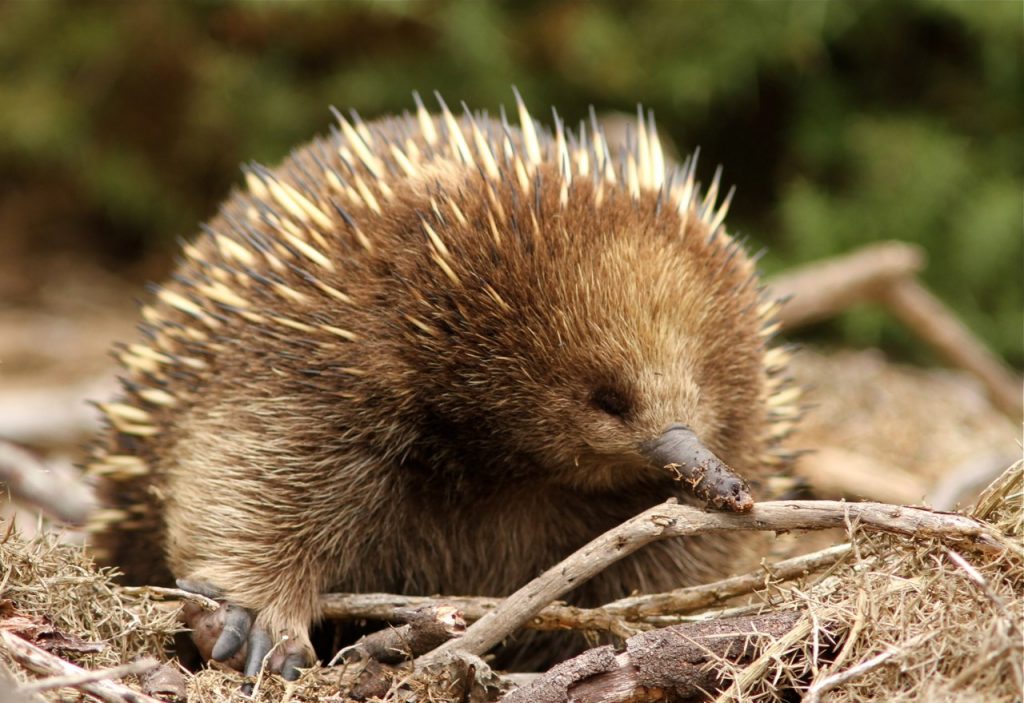It has a long tongue around 18cm long that can whip in and out of its mouth at incredible speeds. This helps the echidna to forage for ants an termites. The echidna was named after a monster in Greek mythology! It can dig incredibly well due to its long claws, meaning that echidna are able to escape danger by digging straight down.
This is a small mammal and it has a long snout that acts as both the mouth and nose of the echidna. It has no teeth and the echidna feeds by tearing soft logs apart and then using its long, sticky tongue to feed on the ants and termites that inhabit the log.

The echidna is a very special mammal and, along with the platypus, the echidna is the only other egg-laying mammal in the world. It lays eggs that have a soft shell and are kept in the pouch of the female until the eggs hatch in a couple of weeks.
The young echidna remains in the pouch of the female for around 50 weeks, when the baby has grown spikes. The mother then transfers the young echidna to a nursery burrow and returns every few days to feed the baby until it is around seven months old.














